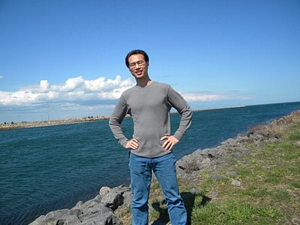|
|
|
|
Many congratulations to Dr. Suneng Fu for publishing his research in Nature in May, 2011! Dr. Fu obtained his Ph.D. degree from the University of Georgia and is currently a research associate in the lab of Dr. Gokhan S. Hotamisligil at Harvard School of Public Health. |
 |
|
|
The title of his paper is "Aberrant lipid metabolism disrupts calcium homeostasis causing liver endoplasmic reticulum stress in obesity" (Nature, 2011 May 26; 473(7348):528-31). Here is the short description of his work:
Dr. Hotamisligil's group studies mechanisms of metabolic syndrome in obesity with a primary focus on diabetes and atherosclerosis. Previous works from the lab and others have established a clear role of endoplasmic reticulum stress in the pathogenesis of insulin resistance and diabetes, but the cause of ER stress in multiple tissues of obesity including liver, adipose tissue and pancreas remains unknown. There are two competing hypothesis of ER stress in the field. One hypothesizes that there is an increased protein synthesis in obese conditions due to overnutrition, which may overwhelm the protein chaperone system in the ER and thus cause ER stress. The other hypothesis suggests overloading of lipids in obesity may disrupt ER structure and thus cause ER stress.
To test the above hypotheses in an unbiased manner, Dr. Fu applied integrated systems biology approaches including proteomics, lipomics and polysome profiling to resolve the status of protein and lipid biosynthesis on the obese ER. In his current study, Dr Fu found that, counter to conventional wisdom, protein synthesis is actually decreased in the obese ER, suggesting "protein overloading" is unlikely to occur in the obese ER and therefore it may not be the cause of ER stress. On the other hand, upregulation of de novo lipogenesis on the obese ER associated with substantial changes in the ER lipid composition. In particular, changes in the phospholipid composition (PC/PE ratio) of ER were associated with SERCA dysfunction and ER stress. Restoration of ER lipid composition as well as SERCA overexpression both ameliorated ER stress, restored normoglycemia and normoinsulinemia. Together, Dr. Fu's work established abnormal lipid metabolism and calcium homeostasis as the culprit of ER stress and insulin resistance in obesity, and it will provide novel therapeutic opportunities for the treatment of diabetes in the future.
If anyone is interested in his research, you can email him directly at sunengfu@hsph.harvard.edu
Cheers
HMS-CSSA
|
|





